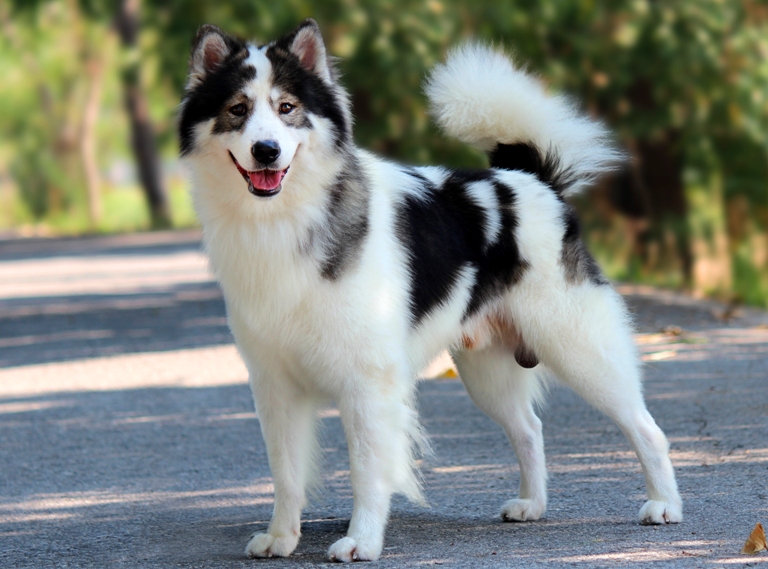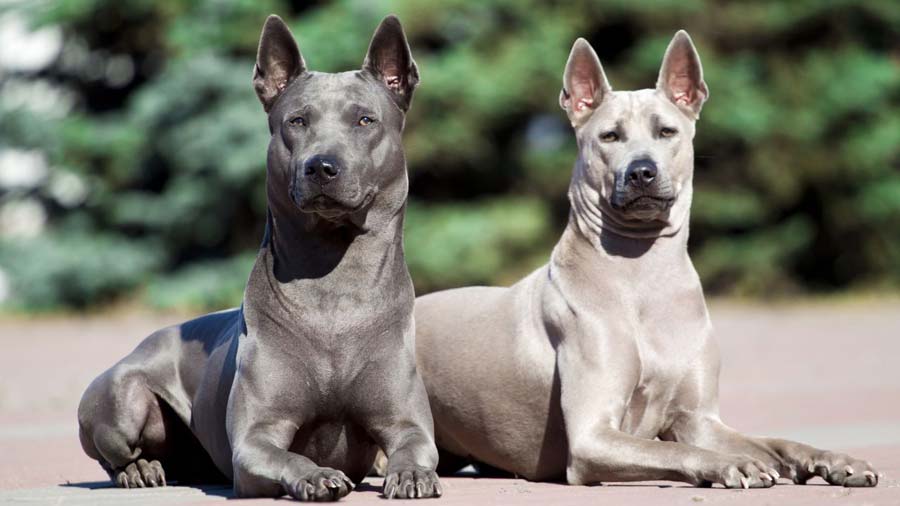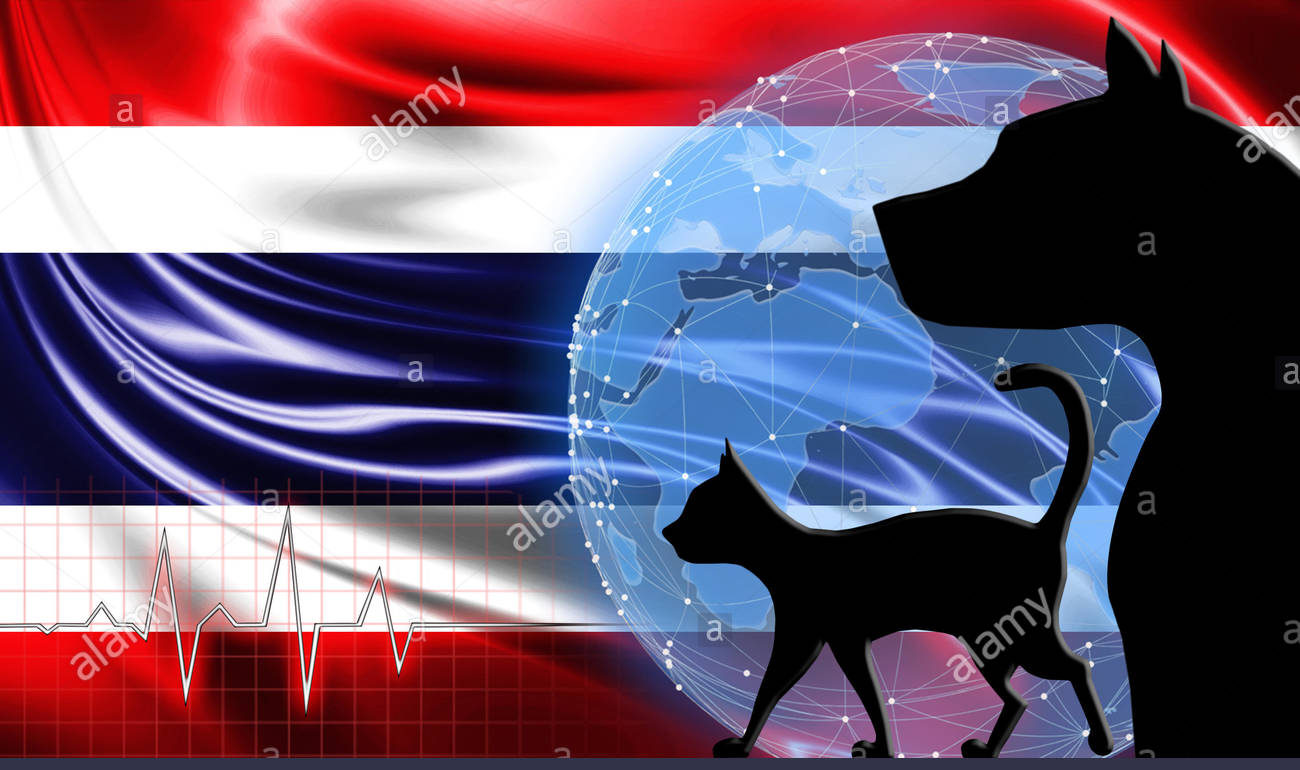Thai Bangkaew Dog

The Thai Bangkaew Dog is compactly built and square in profile. It is well proportioned, with a smooth gait. The double coat consists of a short undercoat, with longer guard hairs growing through it forming the outer coat. The coat is thicker and longer around the neck, chest, and back forming a lion-like ruff, which is more noticeable on male dogs than on female dogs. The plumed tail is carried with a moderate upward curve over the back. The breed comes in white with shades of red, grey, brown, and black in a wide variety of patterns. There are some that have white coats.
Bangkaew is a village located in the Bang Rakam District, Phitsanulok Province in the central region of Thailand. In this district, near the Yom River, a Buddhist abbot’s local black & white female dog was crossed with a now extinct wild dog, producing the first of the breed. Since 1957, selective breeding from their single litters produced today’s breed.
Thai Ridgeback

The Thai Ridgeback is a dog recently established as a standardized breed. The breed was formerly unknown outside Thailand but is gaining notice in the Western world. They are also known as a Mah Thai Lang Ahn. The Thai Ridgeback is one of only three breeds that has a ridge of hair that runs along its back in the opposite direction to the rest of the coat. The other two are the Rhodesian Ridgeback and the Phu Quoc Ridgeback.
The Thai Ridgeback is a muscular, medium-sized pariah-type dog with a wedge-shaped head, triangular-shaped prick ears, and a very short, smooth coat. It has a pronounced ridge on its back formed by the hair growing in the opposite direction that extends from behind the withers to the hips. Puppies are occasionally born ridgeless. Thai Ridgebacks have a muscular and streamlined body, making them extremely agile. The tail is carried upward called a sickle or swordtail. Its forehead wrinkles with enormous expression. Like many eastern breeds, the Thai Ridgeback has retained a ‘scissor jaw’ where upper and lower teeth interlock when the jaw bones clampdown. The tongue can be black or have black marks. Eyes are almond-shaped and brown but may be amber in blue dogs. The ears are set low and point slightly outward. The ears stand up progressively during the puppy growth period; they are not cropped. The back is straight and level. The coat is short, hard, and straight. Due to the length and density of the coat shedding is minimal, occurring once or twice yearly. Because this breed does not have an undercoat the hair does not usually bother people allergic to other breeds of dogs. The coat must be solid colours of blue, black, red or fawn with a black mask being acceptable on reds. However, brindle and white are also found but are not acceptable colours. For international show and competition, shoulder height should be 22-24 inches (56–61 cm) in males and 20-22 inches (51–56 cm) in females. The weight averages 35–55 lbs in females and 40-60 lbs in males.
Eight distinctive ridge patterns have been identified: needle, feather, arrow, lute, violin, bowling pin, leaf, and saddleback. All patterns are acceptable but must be clearly defined and symmetrical. The broader the ridge, the more highly it is prized.
Phu Quoc Ridgeback
The Phu Quoc Ridgeback is a breed of dog from the island of Phú Quốc in Kiên Giang Province in southern Vietnam. It is one of three ridgebacked breeds, the others being the Rhodesian Ridgeback and the Thai Ridgeback. It is not recognised by the Fédération Cynologique Internationale or any major kennel club.
It runs fast, swims well, and can follow either a hot or a cold trail.
A Phu Quoc Ridgeback won the Hanoi dog show in 2013.
The breed was selected as the mascot for the 2018 annual Nguyen Hue Flower Street in Ho Chi Minh City, symbolizing the lunar Year of the Dog as per the Vietnamese zodiac.
